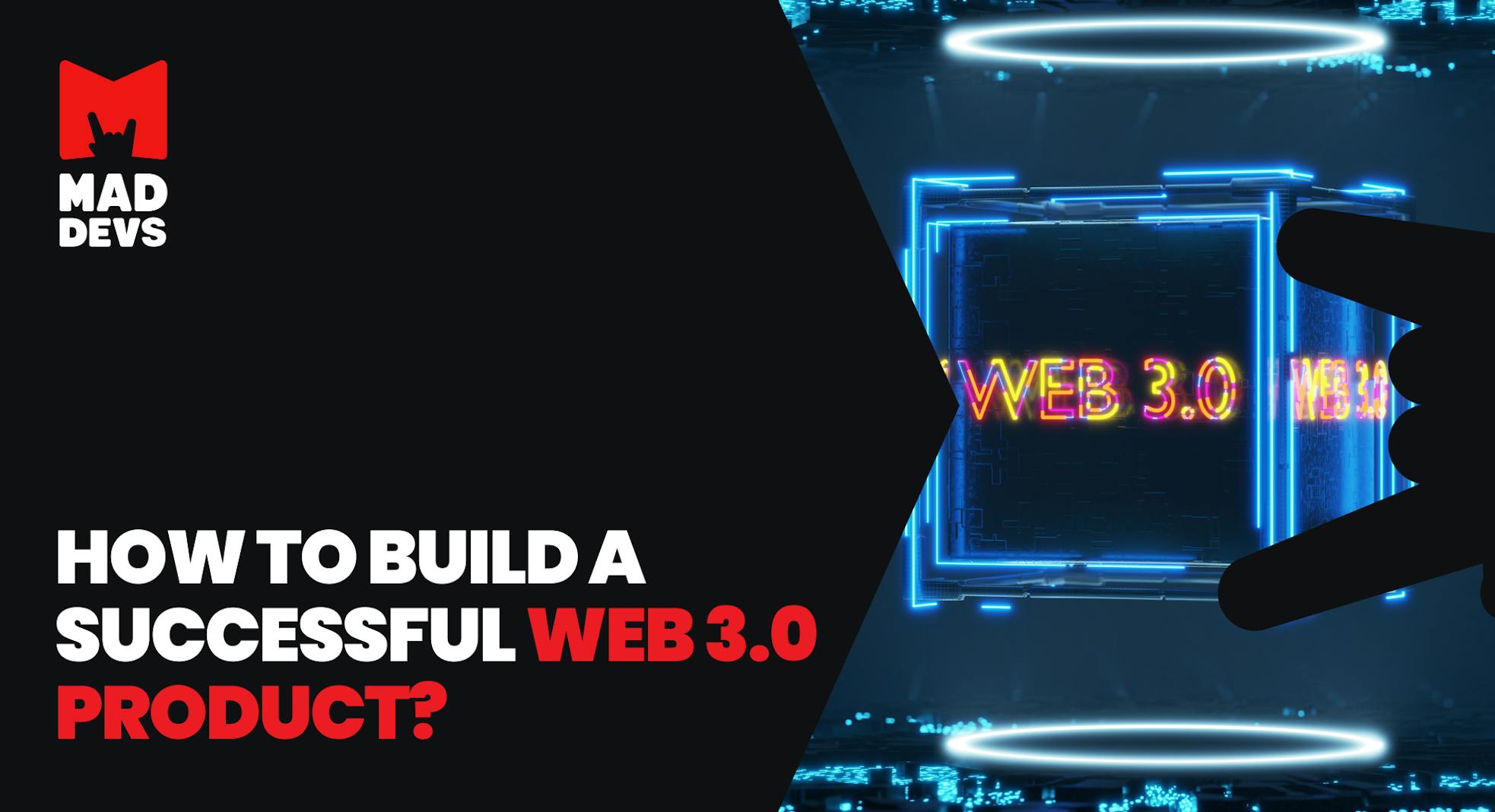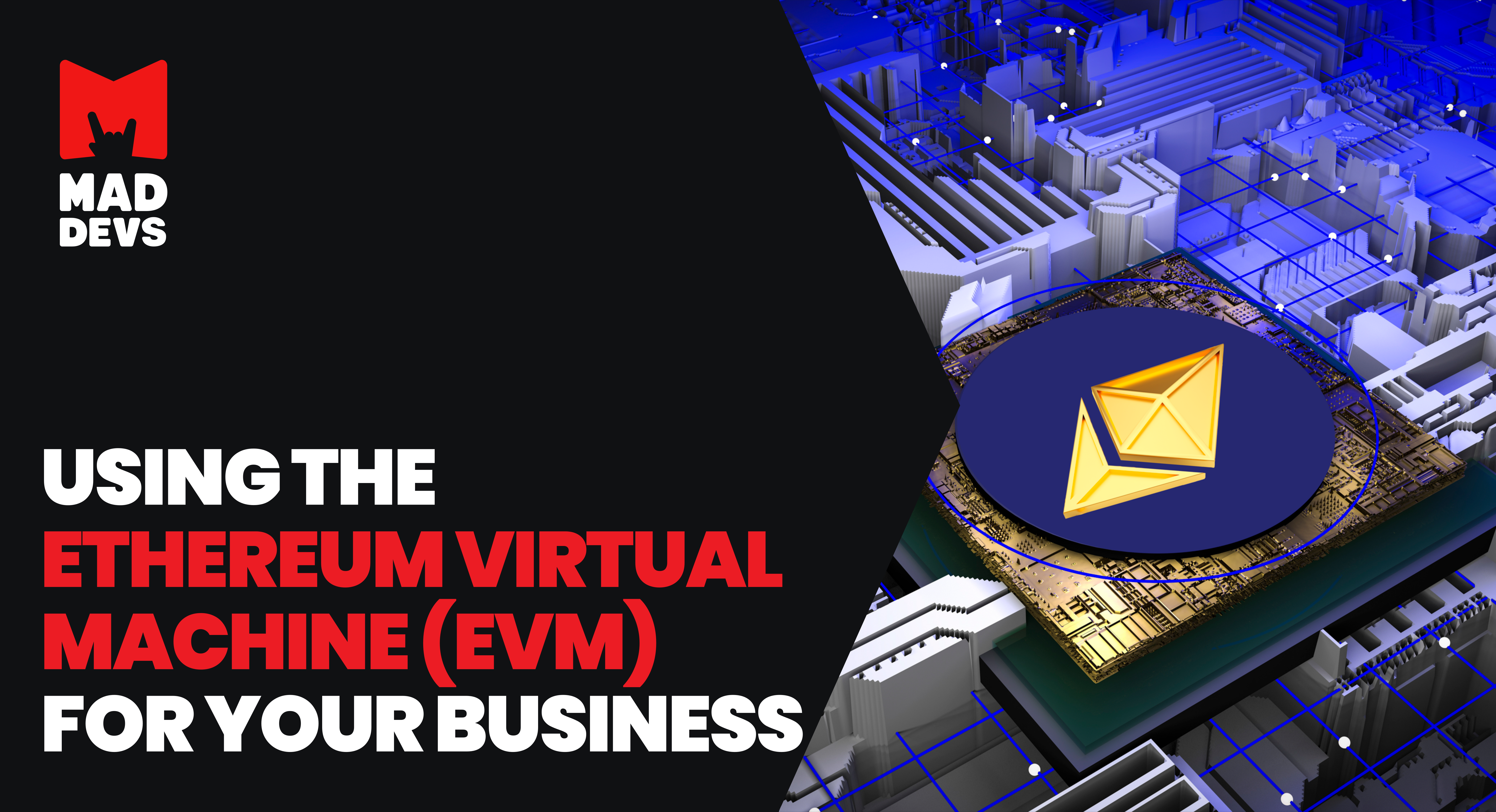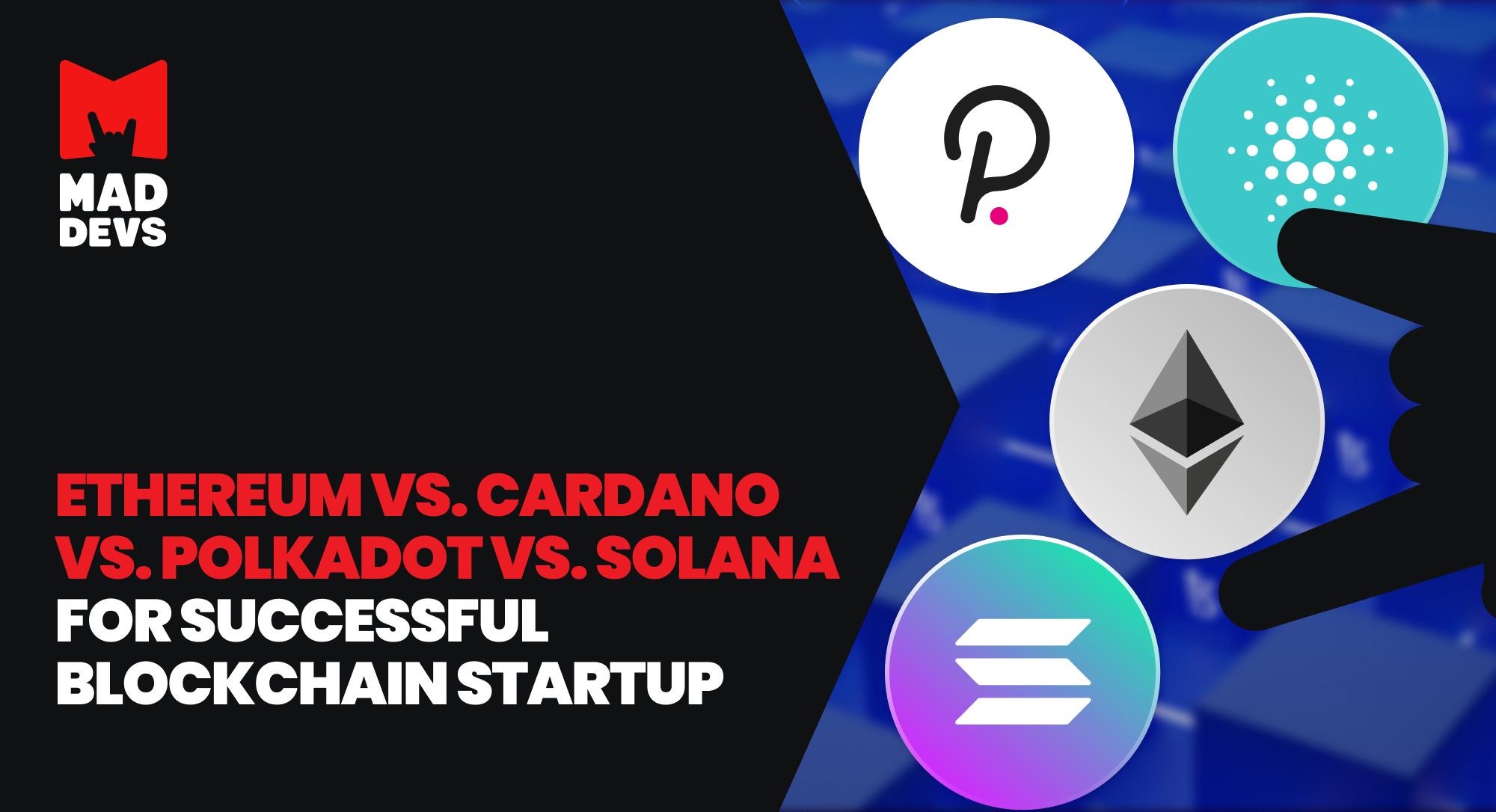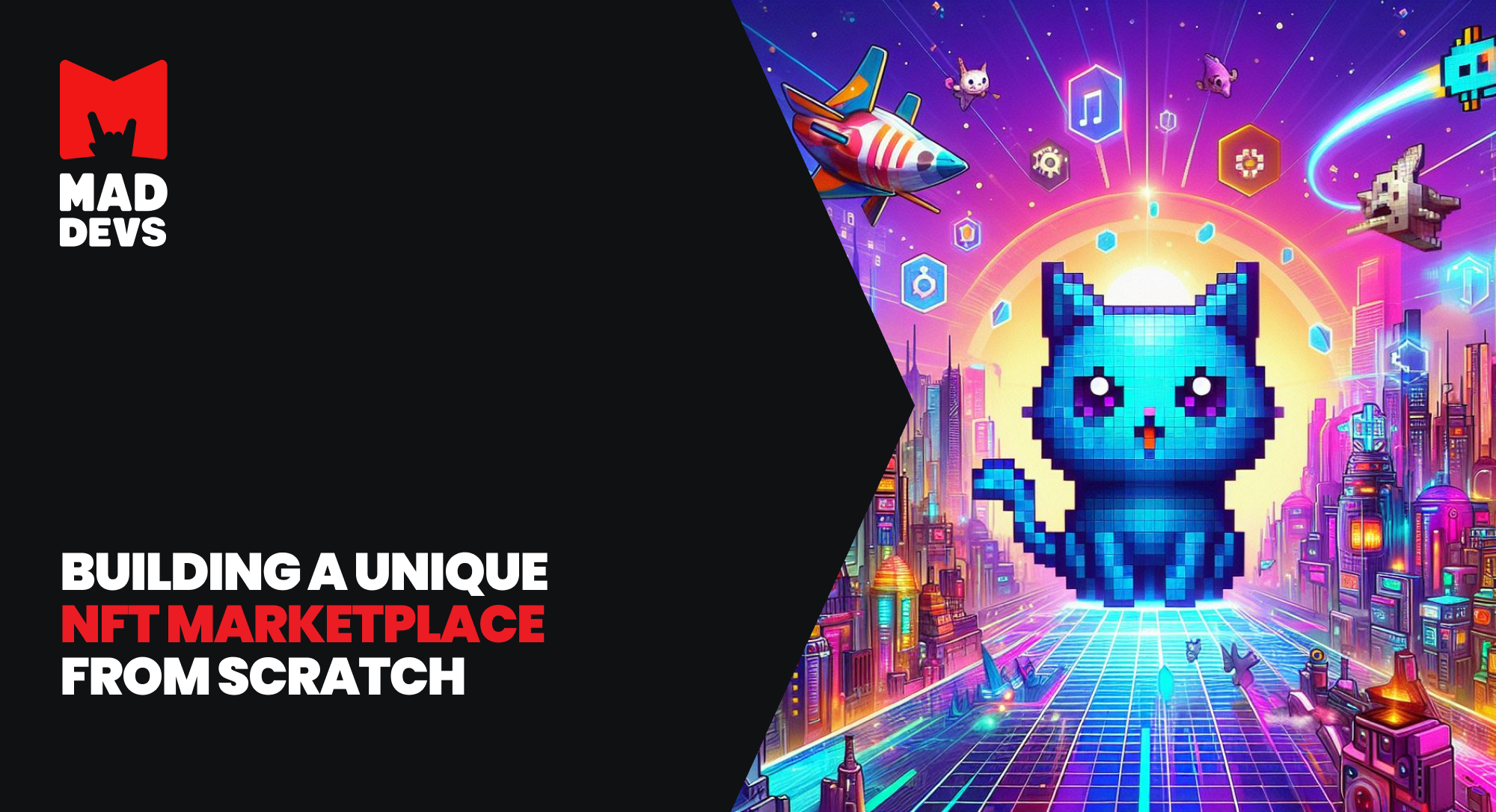The world is changing much faster than we may think. What yesterday was the work of a small group of enthusiasts is now becoming a global trend. Problems that seemed unsolvable for decades are one day being solved through new technology. And all this marks the arrival of a whole new era. Where yesterday, you were doing something manually for a long time, investing a huge amount of resources, and worried that the result, in any case, would not be perfect. And today, you are already worried about whether you can integrate new solutions in time to wake up in the morning and not find that your solutions are long outdated, do not match the quality level of competitors, or have the vulnerabilities of past decades.
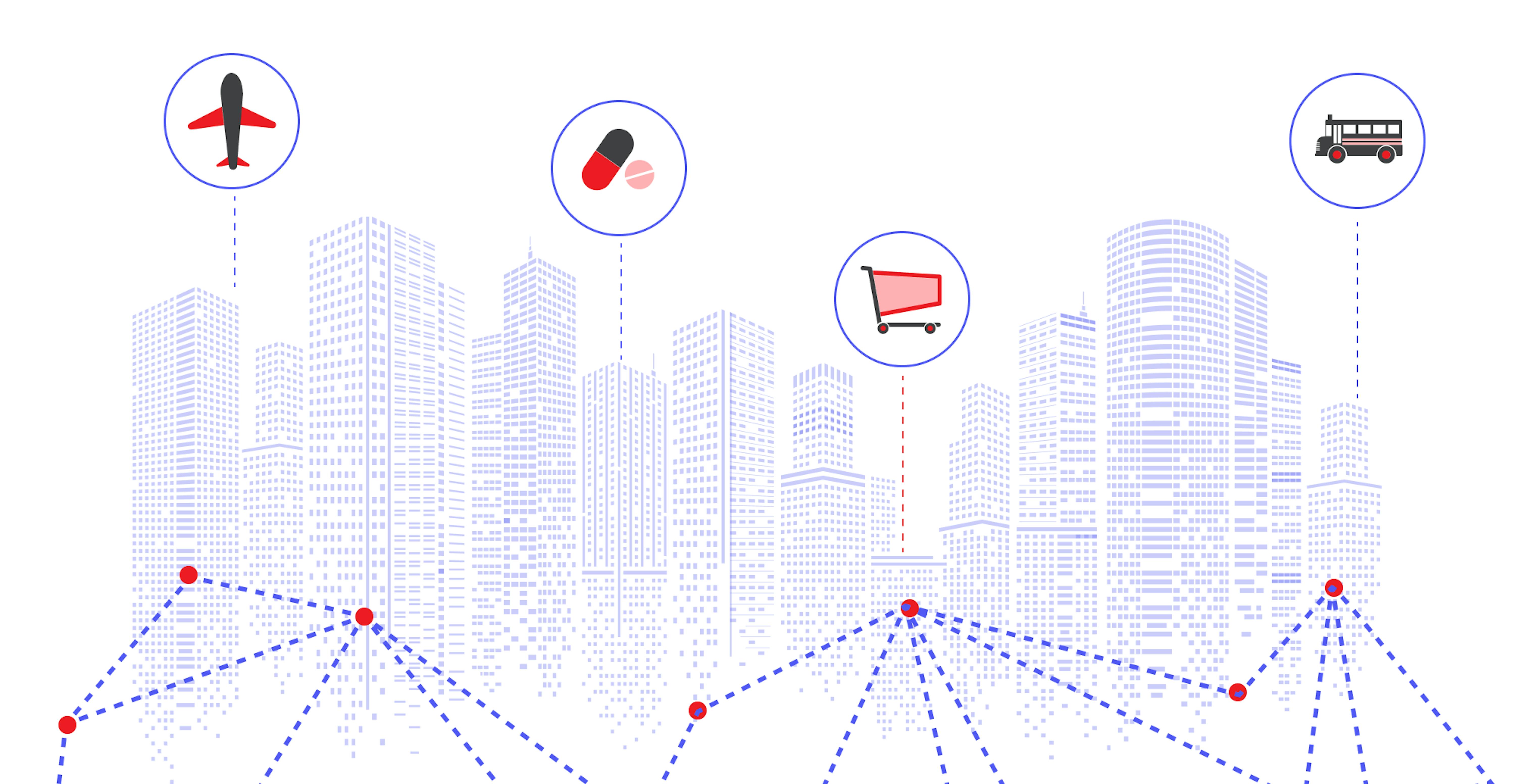
So you should always be on the cutting edge of progress, don't lose sight of the potential of new technologies, and appreciate the vision of those whose vision was not a few years but a few decades ahead and has only found its implementation now.
Today we will talk about such a phenomenon as the move into the new age of the Internet, under the resounding name of Web 3.0. More precisely, we will answer in detail the questions of what is web 3.0 and why it matters? What is web 3.0 technologies, and which of them makes it possible? What is web 3.0 examples that you can already try? And how to build a successful Web 3.0 Product?
A bit of history about the world wide web
Without the past, there is no future. To understand what lies ahead, we need to know what we have now and before. So rather than jumping to technologies and examples, we need to understand the underlying principles of Web 1.0, what Web 2.0 is, and what the transition to Web 3.0 promises us?
What is Web 1.0?
To get a basic understanding of Web 1.0, necessary to understand the reasons for its emergence.
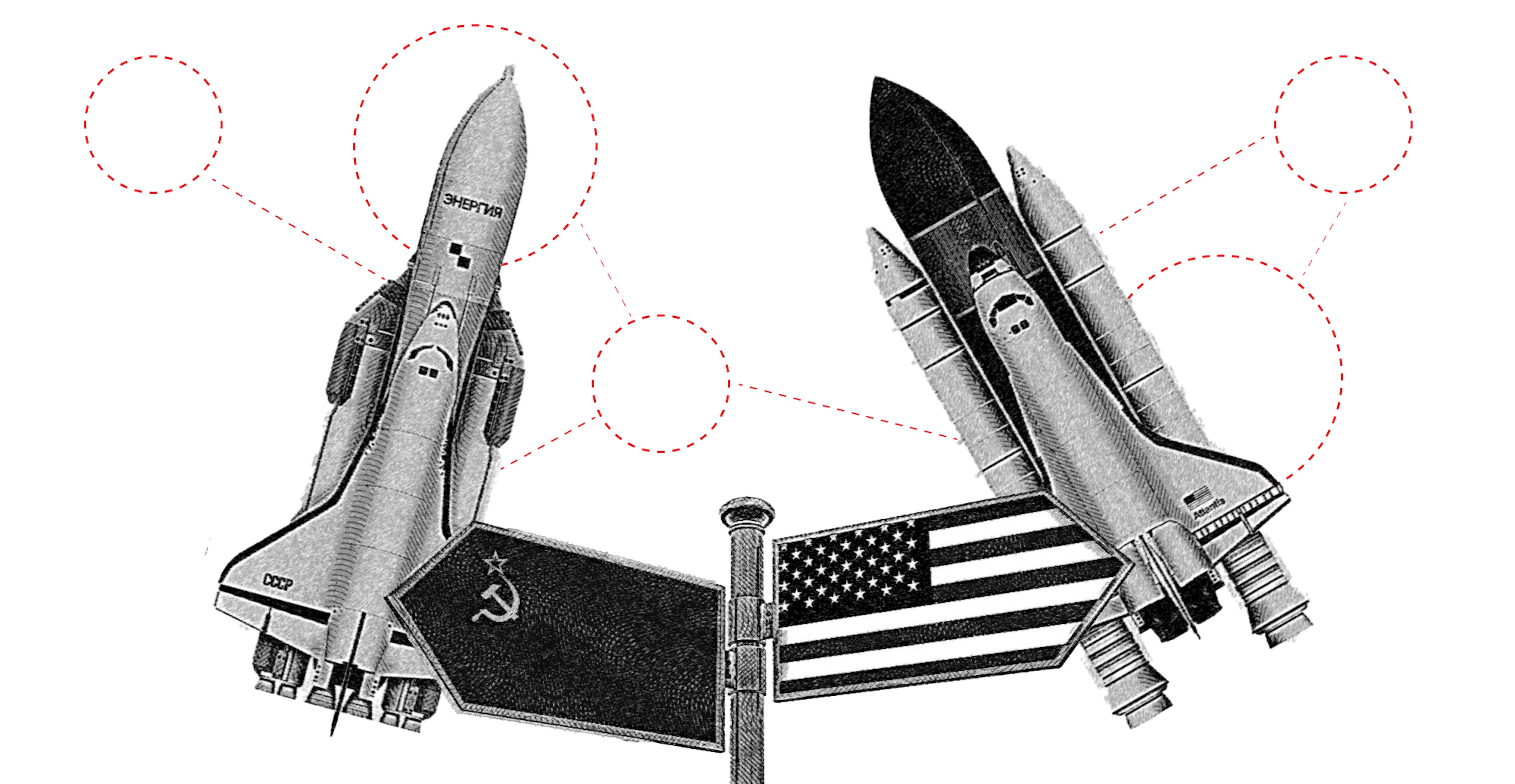
It was the 1950s, the height of the Cold War between the United States and the Soviet Union. The United States was aware of the high possibility that the cold phase could turn into a hot one at any moment. Therefore, they needed a dependable information transmission network that would remain functional with any scale of devastation.
For this purpose, they created an organization called the Defense Advanced Research Projects Agency, or briefly DARPA, where Joseph Carl Robnett Licklider came to work and laid the foundation for the development of such a network called ARPANET, which became the ancestor of the Internet.
It is worth noting that ARPANET was not the first and only computer network. In fact, similar networks were developing and advanced technological solutions at various United States universities in parallel. Many scientists who worked on these solutions are also recognized as the fathers of the Internet and deservedly take their place in the hall of fame of the Internet.
But Joseph Carl Robnett Licklider has some special status even among them all since he probably realized more than anyone else the enormous potential of the global computer network and expressed it in his Galactic Network concept. This concept, in turn, united many of the most talented scientists and put together their best solutions, which eventually became the ARPANET.
Although ARPANET was no longer used solely for military purposes, its capabilities for other uses left much to be desired. So in improving ARPANET, scientists created the NSFNet with a much higher bandwidth needed to transmit more data for scientific purposes. Although ARPANET and NSFNet technologies formed the basis for the future Internet and largely determined its structure, they were still very specialized.
CERN was also one of the scientific centers dedicated to Internet technology, where the legendary Tim Berners-Lee worked. He created all the technologies without which we cannot imagine using the Internet today. He made HTML, the HTTP protocol, the URL and URI, the first web browser and web page editor called WorldWideWeb, and the first-ever website, which was CERN. Of course, this was at first a proprietary technology working locally. Still, a few years later, CERN made these technologies open and put them in the public domain, making them available to everyone. That's when the complete Web 1.0 was born. Although Web 1.0 would hardly appeal to today's Internet users, it was fantastic for the time. So what are the basic principles and features of Web 1.0?
Web 1.0 Advantages
Of course, the new technology should be better than the old. But all is not always so unambiguous because even though we would probably not want to live in the era of Web 1.0, it even had its advantages compared to Web 2.0.
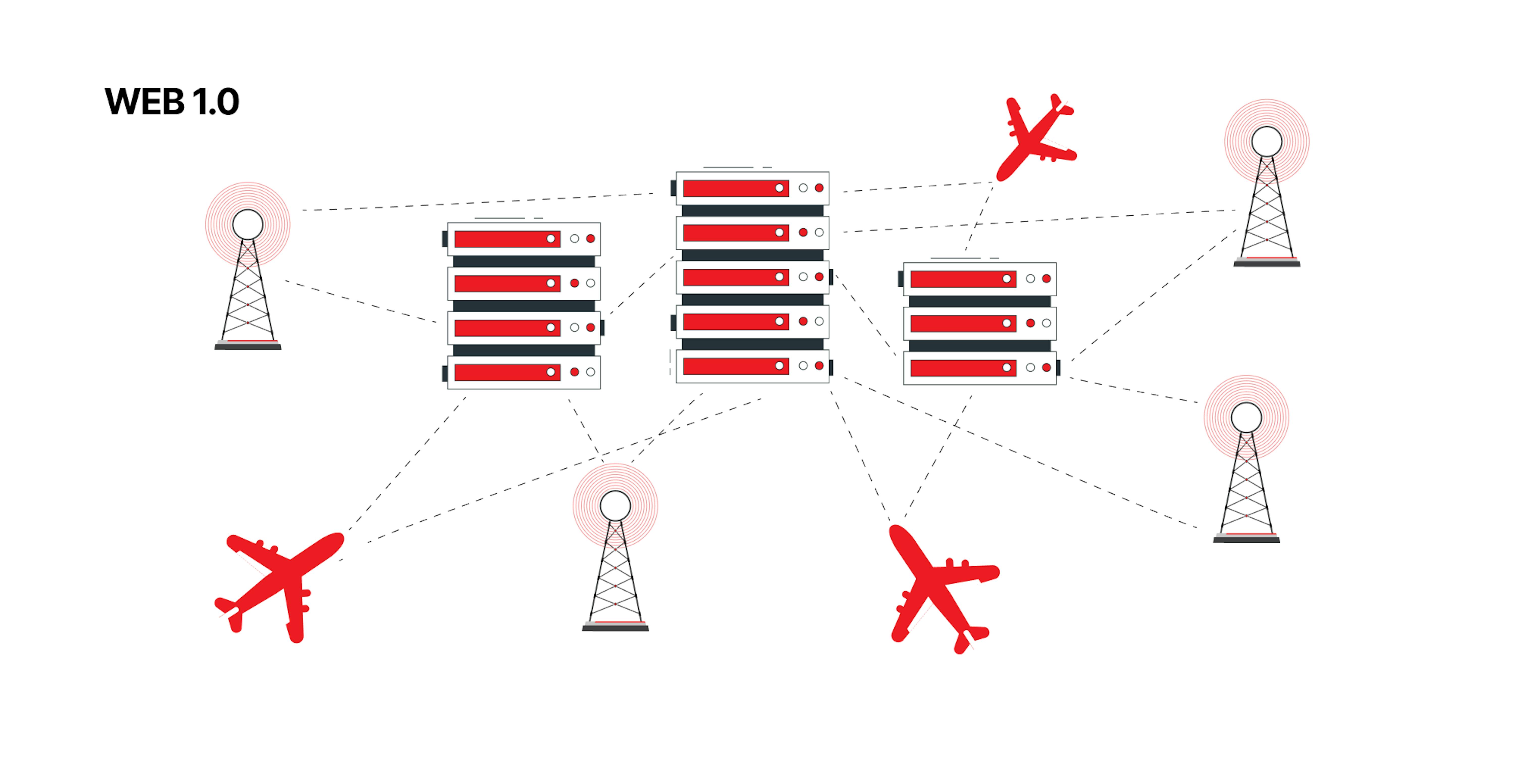
- Decentralization. If you remember that the network was created primarily for military purposes, its stability was an essential requirement. The best solution to this was to make it decentralized so that any degree of damage to network components would not put the network out of operation. Of course, since the main threat was physical damage to the network, software protection methods were not as advanced as they are today. Nevertheless, decentralization made it much more challenging to attempt software attacks and steal big data.
- Standardization. Because scientists were involved in developing this network, most decisions were highly consistent and strictly discussed the adoption of standards. The situation in which a solution creates a long-term problem but is accepted because it solves a short-term problem was an unacceptable approach.
Web 1.0 Disadvantages
- Read-only. Internet pages were static, with no way to interact with them. You could only open and read the page.
- Poor Search. No keyword search algorithms. You only had a list of pages available, which you could order and hope that the information you wanted or were interested in was there.
- Slow Speed. Internet speed was extremely slow. Even pages would load gradually from top to bottom instead of fully appearing as they do now.
What is Web 2.0?
Web 2.0 is the conventional name for the Internet age we live in now. The Internet with social networks where you can keep your feed, sites where you can register and leave comments, or applications where you can order food and goods at home. All in all, it's an Internet where users can generate content and share data, not just browse.
Much of this is made possible by the technology that the Netscape Navigator web browser brought back in the Web 1.0 era. For example, using JavaScript to create forms and interactive content, cookies to keep session information, and a few others. Of course, this expanded the possibilities for interaction incredibly. Still, there was a more fundamental problem that personal computers were not yet that widespread and productive, and the web remained slow.
This began to change with the emergence of commercial data centers that could outsource most of the computing resources and take full advantage of new technologies designed to make the Internet interactive. That is when the dot-com boom happened, after which either those who destroyed their competitors in every possible way survived or those who offered some innovations. And it was they, in many ways, who changed the principles of the Internet, making Web 2.0 as we know it today, with all its inherent advantages and disadvantages.
Web 2.0 advantages
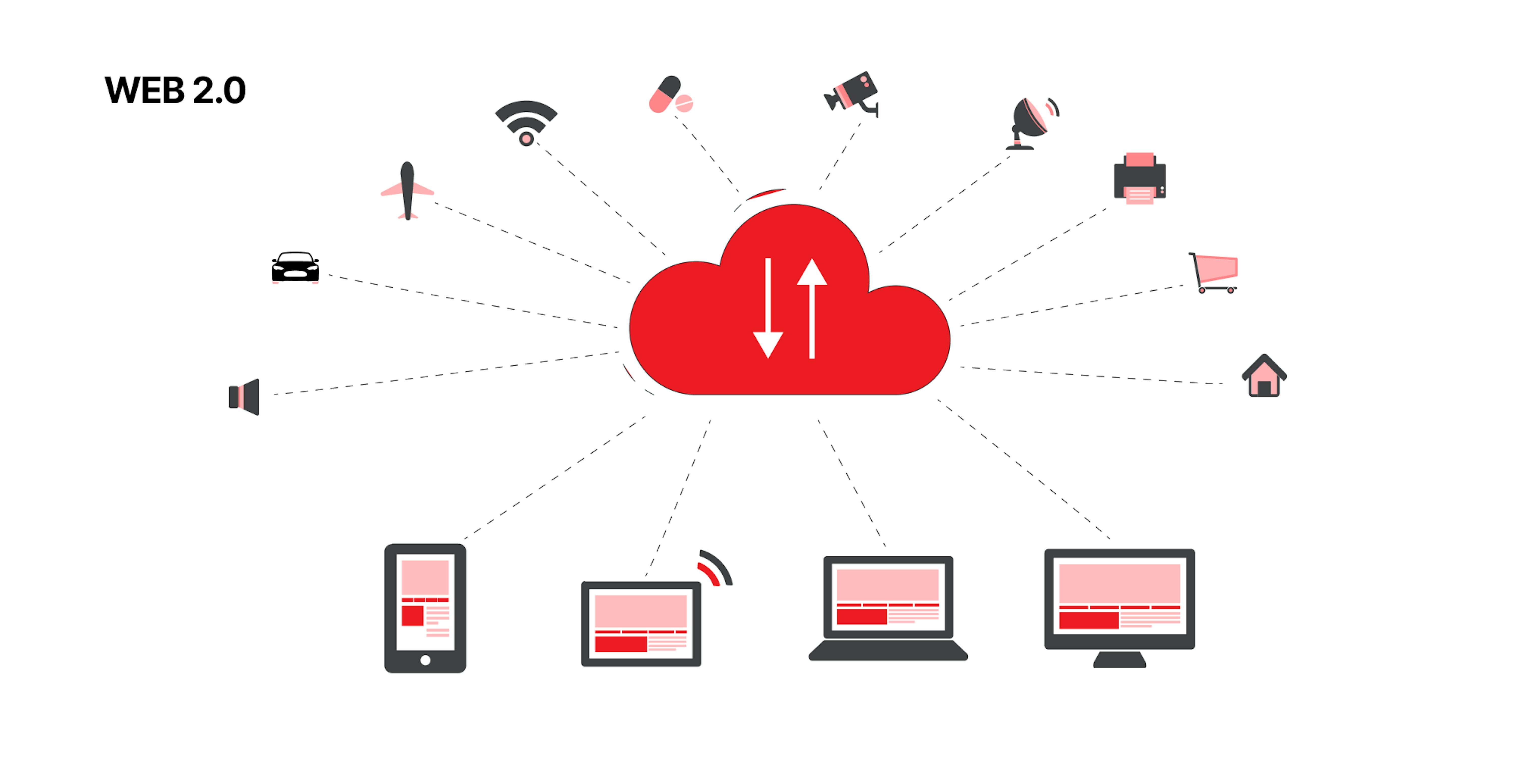
- Content Generation. As mentioned earlier, we've gone from just reading to generating content. The Internet has become a source of limitless possibilities for many people. For entrepreneurs, it has become an innovation platform for creating previously impossible businesses. For artists, it has become an incredibly powerful tool and a new limitless platform to publish their creations. For ordinary people, it has become a place to find endless resources for learning, working, socializing, and other ways to improve their lives or have more fun.
- Cloud Computing. Data centers have the enormous computing power and are not limited by either software or hardware limitations of end-user devices. This is what gave rise to social networks, which have built their solutions from scratch in such a way as to provide the user with maximum opportunities for interaction. Moreover, they now have access to a massive amount of personal data, which they can process to improve their services.
- Social Networks. As mentioned earlier, social media has become an extremely popular platform for various purposes. People could communicate more easily than ever, and entrepreneurs could make a lot more money by increasing their online activity and getting even closer to potential customers. Many businesses started not with their website but a social media page because it was an incredibly advanced, mostly free, and highly effective way to promote their products and services.
- Mobile Apps. Although Internet technology has improved exceptionally quickly, it lagged behind mobile devices, which have become increasingly powerful, attractive, and accessible for a moment. It spawned the mobile app boom, where every company wanted their app no matter how much they needed it. In the beginning, though, apps did run a lot faster, allowed for a lot more, and enabled partially or fully offline operation. After all, exchanging data with the server was done when it was about the function of the app, not about trying to monetize its operation, and the subscription model was much less popular than a one-time purchase.
Web 2.0 disadvantages
- De-anonymization. The transition period in which we now live has lost some of the fundamental advantages in its classical period of Web 2.0. However, some of its problems lay at its heart and became a cause for abuse by a set of giant companies, something that has only grown with time. One of these shortcomings was non-anonymization, which was more inviting than forced from the beginning, allowing users to share moments from their lives openly through the same social networks. But over time, some services began to require proof of identity as one of the conditions for registration and the ability to perform operations on their platform. Now it's come to the point where anonymity online has become more by faith than real opportunity since collecting and analyzing user data, its identity, and everything related to it is figured out by default. And some ways to help maintain anonymity, such as the Tor browser, are forbidden by law in many countries.
- Censorship. Another major problem is censorship, which in some countries may become a mechanism for manipulating public opinion, while in others, it becomes an instrument of persecution and repression. Of course, some unacceptable statements or behaviors are objectively destructive. But one of the basic principles of the Internet has been freedom of speech, and if it is to be violated for some constructive purpose, it should be done by the entire community, not by the platform owners.
- Centralization. Centralization, as the root of all previous problems, gives rise to another one, which is a significant reduction in data security on the network. Data is the oil of the 21st century, and when it's all stored in one place, it's like a pointer to criminals where to go to steal it. The biggest cyber-attacks with the most devastating consequences are the attacks on the databases of large corporations, of which anyone has heard of repeated leaks. It is also a frequent tool to thwart democratic processes and cover-up state crimes. We all remember how dictatorial regimes, due to the centralization of the Internet, shut down traffic during demonstrations in Egypt, Belarus, and other countries.
What is Web 3.0 and why does it matter?
We have delved enough into what was Web 1.0 and Web 2.0. All this is necessary to answer questions about Web 3.0 exhaustively. Because it essentially removes the disadvantages of its predecessors, takes their advantages, and solves the problems that are open to each of them. So Web 3.0 is much more important than it might seem at first glance. Let's take a closer look at it from all possible angles.
So what is Web 3.0?
Web 3.0 is the next stage of the Internet, the structure and data of which is decentralized and distributed to all network members. Each network member is both the node of communication, the provider of computing power, and the guarantor of the data transfer protocol. It largely returns us to the structure of the original Internet, but in a much more advanced form.
Web 3.0 advantages
Let's consider the main advantages and disadvantages of Web 3.0. Yes, they are there too because nothing is perfect. But comparing the advantages and disadvantages, it quickly becomes clear how Web 3.0 has great potential for business, science, art, politics, and economics right now. Also, the technologies of Web 3.0, which we will talk about further, are actively developing, and many disadvantages lie not in their structure but their insufficient popularity.
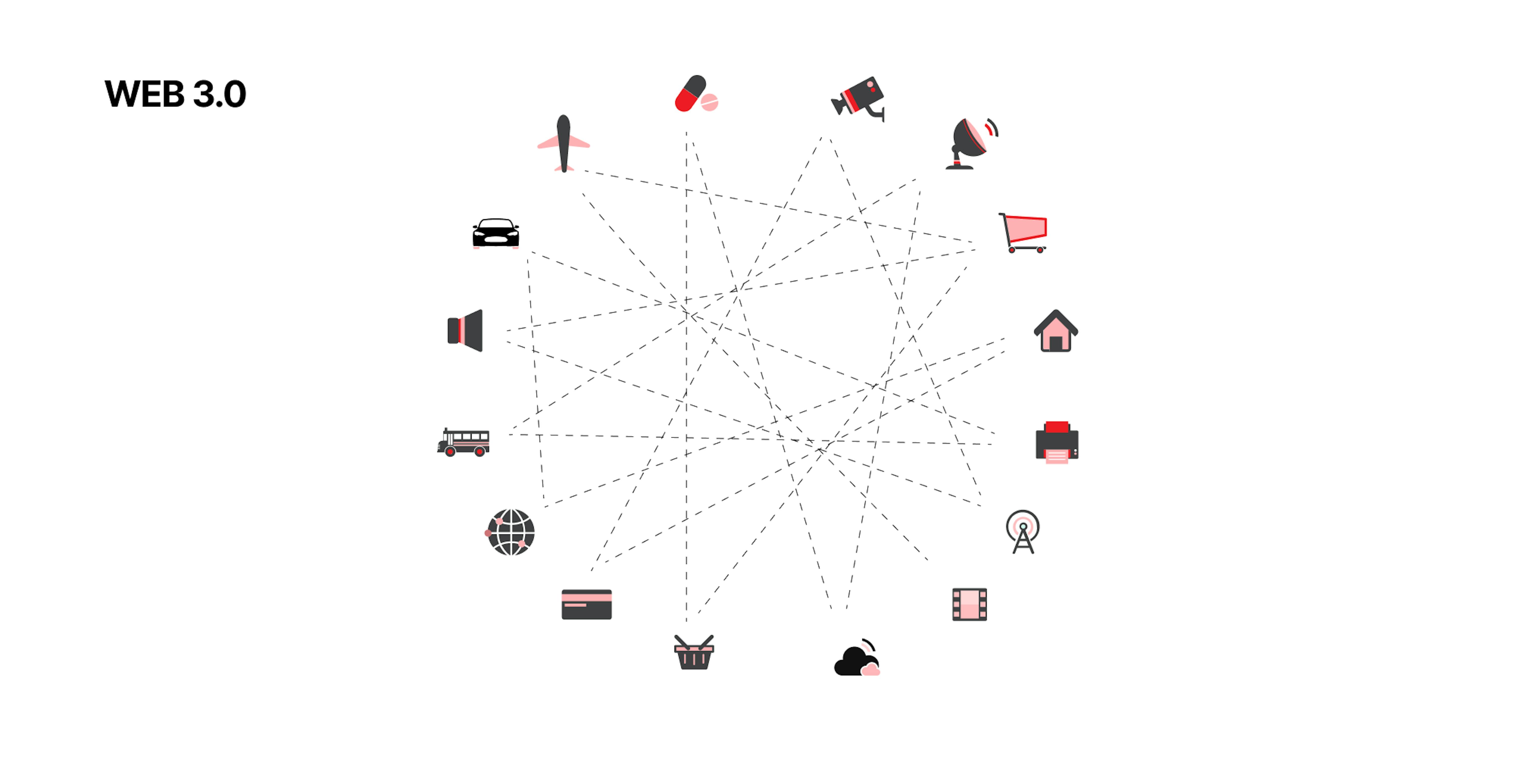
- Decentralization. Web 3.0 goes back to its origins because it involves decentralization, only now at a more advanced level in terms of software. This takes away the excessive power of large corporations, regional ISPs, and other services that can behave unfairly with users' data.
- Automation. Web 3.0 involves a much higher degree of automation in verifying and transmitting data over the network, which saves huge maintenance costs and redirects them to improving systems. Thus, all solutions using Web 3.0 solve much more long-term and fundamental problems, noticeably improving lives every day and not just offering proper but fast-changing solutions.
- Stability. Since each participant of the network is also a communication hub, there is no single place where you can turn off the Internet for an entire region or otherwise have a global impact on it. It allows the network to work even in cases where it may be inconvenient for the authorities.
- Anonymity. Web 3.0 allows us to bring back anonymity to the web. Of course, it doesn't guarantee this on its own and requires some additions. But the difference is that this anonymity there is complete or very close to that, whereas now it is entirely imaginary.
- Security. Because all the data is stored separately and in parts, attackers have no way to come to a specific place and steal all the data entirely. And any attempt to do something like that is highly resource-intensive and becomes unprofitable on a large scale. Of course, we've all heard about the recent hacks of NFT marketplaces, but it's more of a performance art aimed at discrediting the technology and only then attempting to steal it for profit. After all, it is unknown precisely what resources were spent on this hack and what the net profit was. In addition, all stolen exhibits are unique and identifiable, meaning they are immediately blocked for further resale. Therefore, despite the absence of absolute security, which is an impossible and technically illiterate statement, its degree in Web 3.0 is incomparably higher.
What are Web 3.0 technologies?
The technology set for Web 3.0 is very broad, even now, although we are not even close to a global transition. Therefore, many implementations of these technologies may change dramatically by this point, but the principles and technologies built on their basis can already be highlighted today.
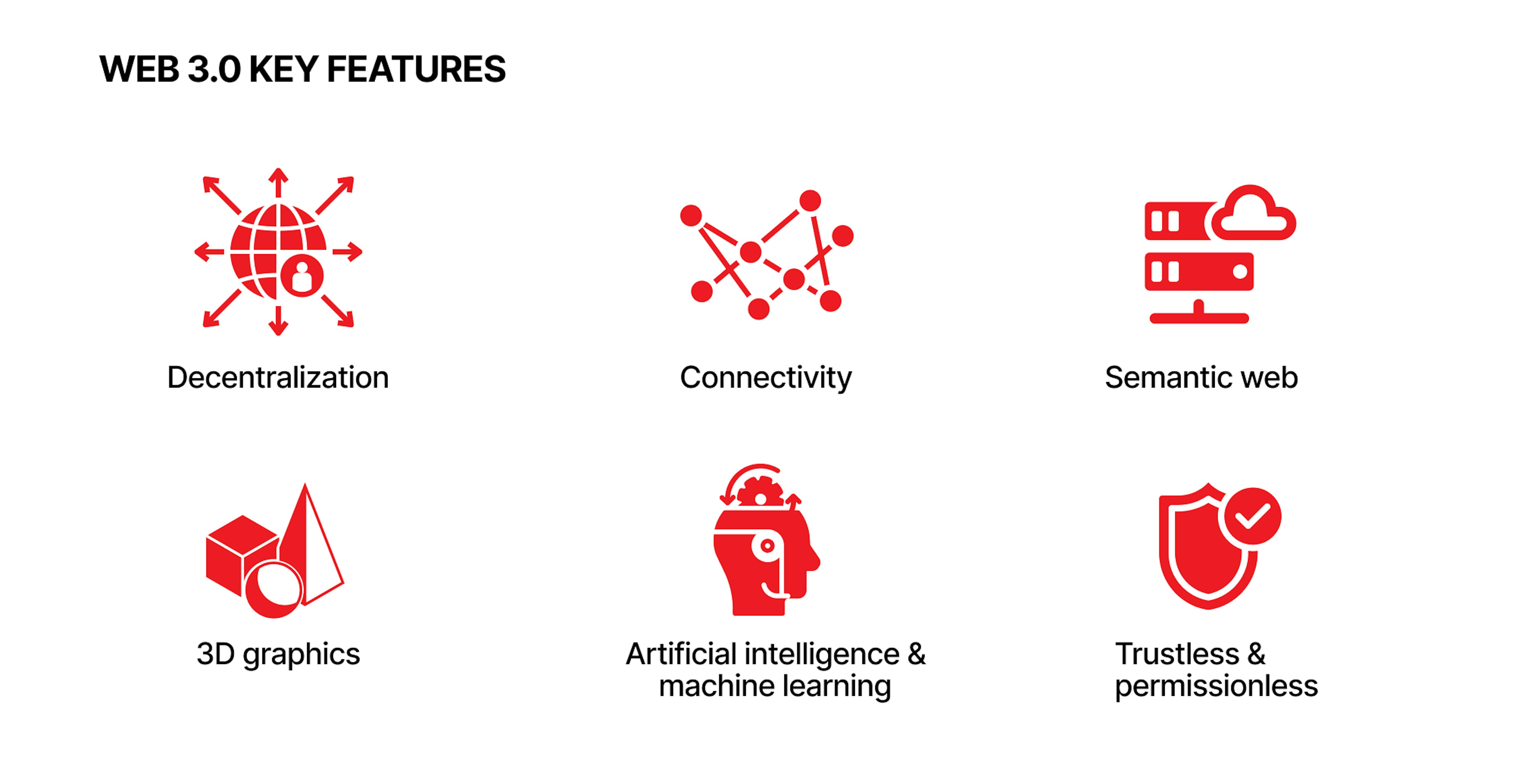
The foundation of Web 3.0 is blockchain technology, which makes it decentralized and distributed. The main blockchain for Web 3.0 today is Ethereum because it offers far more possibilities than traditional Bitcoin. Its use of smart contracts allows the creation of much more sophisticated and trustworthy solutions that execute automatically when the contract terms are met. EVM, an environment for developing and executing smart contacts, oversees this. Although Web 3.0 is primarily a principle rather than a particular technology, and if something comes along in the future that is consistent with the principles but is technologically more advanced than EVM, it will not kill Web 3.0 but will only boost it.
We have an excellent article where we explained EVM principles and examples in detail. If you want an even deeper technical understanding of one of the core Web 3.0 components, then enjoy reading.
What is Web 3.0 crypto?
Of course, since one of the fundamental goals of Web 3.0 is the transparency and stability of financial institutions, one of the technologies is Cryptocurrencies. They aim to transform it into decentralized financial services, helping to solve the problems of fiat money, from the centralized and uncontrolled money emission to the reliability of centralized money storage. One of the key cryptocurrencies for Web 3.0 is ETH, since EVM. However, there are other cryptocurrencies designed for Web 3.0, which we will talk about a little later.
What are Web 3.0 Dapps?
Decentralized applications which functionality is based on smart contracts are accordingly possible thanks to EVM. They allow users to no longer give away all their data to large corporations or government entities, significantly reducing the risk of their data being sold or leaked. In essence, the user gets the same functionality as conventional web applications but with much higher stability, security, and privacy. The fact that it all works in an EVM environment and that the functionality of such applications is based on smart contracts does not make it any more difficult to use. After all, decentralized applications aim to allow the most ordinary user to take advantage of the technology without learning about it.
What are Web 3.0 DAOs?
Web 3.0 is designed to make many other institutions more stable, transparent, and automated so that decisions can be made more quickly, easily, accurately, and impartially. For example, the decision to issue a loan by the bank, applying to the court, and so on. For all this, the DAO, or Decentralized Autonomous Organization, was created based on blockchain and smart contracts. Ethereum is the most popular solution, but DAO can be based on any blockchain that uses smart contracts, such as Polkadot, Solana, or Cardano.
By the way, we have an excellent article where we compare all these blockchains together. We are sure you will be interested to hear the experts' opinions on which blockchain is the best for a startup. Enjoy reading!
What is Web 3.0 AI/ML?
Another fundamental technology underlying Web 3.0 is using artificial intelligence and machine learning to analyze big data. While blockchain increases the network's stability, security, and privacy, AI ML takes the network's efficiency to the next level. Solutions based on data processing with AI ML improve the performance of various systems, from more transparent and reliable elections to more accurate findings and applications of better economic strategies. From more advanced searches for new chemical compounds to create drugs to better polymers for engineering and rocket science. From a more individualized educational program for everyone to a complete transformation of the educational infrastructure. And the list could go on and on. The bottom line is that the role of Artificial Intelligence and Machine Learning in processing data on the network for the benefit of its members and not just to make money from it is an integral part of Web 3.0.
What is Web 3.0 semantic web?
As a result of artificial intelligence and machine learning, the Semantic Web replaces keywords. Its goal is to teach artificial intelligence to understand the meaning of words, give the most accurate search results, and create many more sophisticated products based on that. It largely contrasts how search engines now use keywords and link counts. First, it is not the most accurate way to search for information. Second, it gives a lot of opportunities to shape the results unfairly by manipulating the human information field for political or marketing purposes.
What are Web 3.0 voice assistants?
Another benefit of using artificial intelligence and word sense recognition is the next stage in developing voice assistants. It will allow them to recognize human speech better and perform many more complex actions than ordering merchandise, buying tickets, and making reservations just by the user's voice request. Moreover, artificial intelligence may, in the near future, save lives by catching the most subtle nuances of intonation and subtext. For example, for people with vision problems, it will be a complete solution instead of additional as it is now, or in emergencies or cases where a person is threatened, but there is no chance to say so openly.
What are Web 3.0 AR/VR and 3D?
VR technology, especially AR, is also part of Web 3.0 because, with the appropriate equipment, people can get a lot of useful information about the world around them in real-time. There is also a shift from 2D to 3D graphics, which is much more informative in everyday life, such as navigation, and in industry, such as the visualization of complex processes in engineering, medicine, and so on.
What is Web 3.0 edge computing?
Computational power is starting to shift back to devices in many ways. Apple, for example, at all times, even in the global trend of moving everyone to the cloud, has been improving neural cores in its microchips, arguing that only a combination of software and hardware security can provide decent data protection today. Even Google, with all of its cloud services, made the jump to neural computing on the device in its Pixel 6, and all for a reason. Of course, for a huge number of solutions Cloud Computing will remain unchanged because it has its undeniable advantages. But still, the primary trend is shifting back to devices in its new iteration of Edge Computing. It is distributed computing between devices connected to the Web 3.0 network. This reduces the computational load on end devices far less than Cloud Computing, but it gives users back control of their data and rewards them for providing their computing power used on the network.
What is Web 3.0 IoT?
In Web 1.0, a person could only read. In Web 2.0, a person could interact. But Web 3.0 must interact with the world around it. It is also one of the key principles of Web 3.0, which gave birth to such technology as the Internet of Things or simply IoT. The IoT is a network of smart devices, industrial or consumer-grade, that are continuously exchanging data with each other to mutually coordinate the execution of complex commands or execution of complex scenarios without direct human commands. This is the reality now, but the only difference is that most networks of these devices are not part of Web 3.0 and operate within local networks using proprietary protocols. However, nothing prevents them from implementing blockchain and smart contracts, which would make them much more stable and reliable. Some such projects are already being launched, and we'll talk about them soon.
What are Web 3.0 examples?
Well, as we promised earlier, let's look at some real examples of Web 3.0 available today in each category. Some of them are not yet very popular but fully working and very actively growing. And some you're familiar with, although you don't even know their true goals and capabilities, you might be slightly surprised.
Brave browser
The Brave browser is an open-source blockchain-based browser that supports Web 3.0 and even has its cryptocurrency, which you get as rewards for using and viewing ads. Its popularity is steadily growing, though who would seem to be able to squeeze Safari or Google Chrome today? But its speed, many extra features, and advanced infrastructure keep it from getting lost among the giants.
Sapien
Sapien is a social network with much wider and unique functionality, using EVM at its core. It already feels like a big thing to try out. The network offers cryptocurrency, creating an NFT passport for each participant and connecting to multiple DAOs. To simplify, it feels like a decentralized virtual city for people with all kinds of knowledge and skills who want to share them with the world in a much more honest and transparent way. It's a platform worth taking a closer look at.
OpenSea
OpenSea hardly needs a separate introduction because NFT has already taken over the world of technology and mass culture. However, maybe some still do not quite understand what is behind all these strange pictures, where they come from, and why they cost so much. So OpenSea is a marketplace for buying and selling NFT tokens, which roughly means a signature to a media file, although it can be a signature to any digital product. The platform itself is built on the Ethereum blockchain and uses EVM as a mechanism for signatures and transactions. The platform is top-rated, and an entire community has grown around it and continues to grow.
By the way, concerning NFT marketplaces, we have an excellent article where we consider in detail what they are, what they are like, and how you cn build your own. Enjoy reading!
Augur
Betting on sporting events is so ancient that it is impossible to trace its beginnings. Of course, with the spread of the Internet, it moved online but had some problems with payouts and often caused excessive distrust of this already risky activity. Augur and similar platforms are designed to change this by eliminating dishonesty on the part of bookmakers because they are based on blockchain. They have their cryptocurrency, an extensive list of sporting disciplines on which you can bet, and some other features on the use of other cryptocurrencies. It's worth noting that bookmakers have always made a lot of money, and when it's based on trustworthy technology, it's an even bigger opportunity than ever before. That's why we primarily recommend those who want to create a profitable Web 3.0-based product to consider this, which we'll talk more about later.
Metaversedao
Metaversedao is one of the decentralized organizations that allows users to passively generate income from a tax on tokens, which will also fund the project's treasury wallet, which is then used to generate income in different blockchains. In essence, it is a kind of prototype of a state, with its taxes and deductions, as well as cultural centers, because in many ways, the platform is focused on the development and interaction with the already existing NFT Games, 3D & Metaverse VR Games. In fact, DAOs are already a whole separate industry, each with unique functionality. Still, all of them are also united by blockchain and the attempt to make decentralized finance, decentralized medicine, etc.
Siri and Google Assistant
Siri and Google Assistant are not yet full-fledged but obvious examples of voice assistants using AI and ML to learn the semantic meaning of words, which will be the basis for the semantic web. Moreover, even Google has moved the voice assistant from the cloud to the device, which could further evolve from on-device computing to edge computing, which we discussed earlier. In other words, the industry giants, whose main livelihood is that data is centrally stored and processed on their servers, are gradually moving into hybrid mode, which is a serious reason to take a hard look at Web 3.0.
How to build a successful Web 3.0 Product?
Well, we have understood in detail the basics, technologies, and examples of Web 3.0, which already exist, perfectly work and quickly gain popularity. You probably already want to build your own Web 3.0 product but don't know where to start. Now we'll help you get an idea about it.
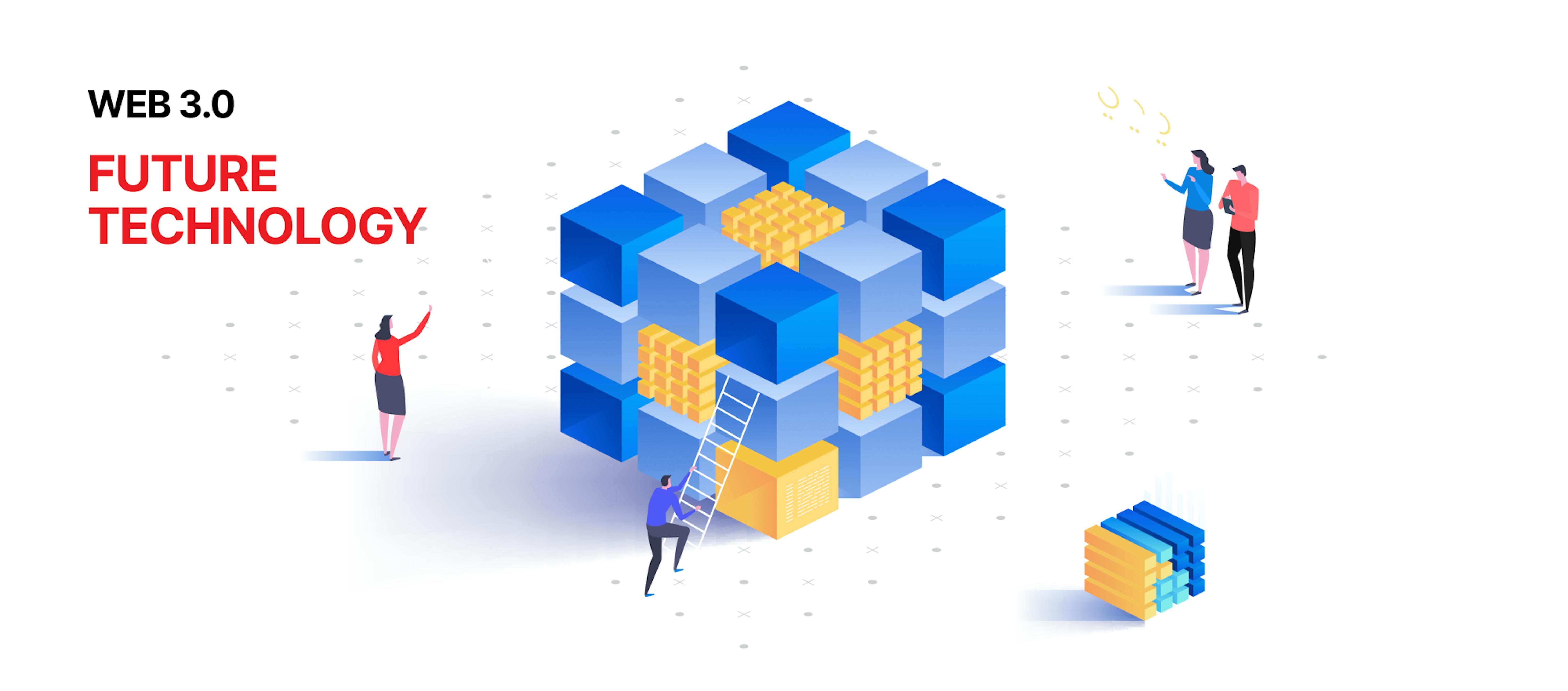
However, it is necessary to note that, as you could see earlier, despite the general principles of all Web 3.0, their purposes can be very different in particular. For example, we managed to develop many different projects based on EVM and made smart contracts for various business purposes. And the key success factor is an individual attitude to each customer and an individual approach to each idea. For a more detailed expert assessment of your idea, we recommend contacting our Delivery Managers. They will carefully listen to you and suggest the most beneficial practices and technologies.
The main stages of building
- You need to determine whether you need to implement or base your solution entirely on Blockchain? If you have an Internet company that develops digital products, you must have competent people on your staff to answer this very first and important question. If you have an industrial company or just a bright idea that can change the world, you still need to turn to experts.
- Once you have presented your idea and received an expert opinion that its implementation using Blockchain is highly desirable or even necessary, you can safely start discussing the idea more concretely.
- From the idea, you need to formulate a specific problem and its specific solution to clearly define how it compares with competitors and understand its initial competitiveness. It is possible that this problem has already been solved by another company, or a number of companies are on their way to solving it.
- Once you have determined that your solution is competitive, you can move on to the more technical aspects, which will determine the number of resources needed to develop the solution. More specifically, you need to determine the best tools to develop your solution at the following levels:
- Application
- Services and optional components
- Protocol
- Network
- Infrastructure - After defining the entire development stack, you need to clearly describe the range of tasks that need to be performed at each of these levels. For example, if at the Application level you need to make native apps for iOS, Android, Mac, Linux, and Windows platforms, this is a completely different scope of tasks if you need a cross-platform web application.
- When the whole list of tasks at all levels is defined, you can calculate how many specialists and what level you need to have your solution ready to launch after a year, for example. If you have found a gold mine and you need a ready solution in a couple of months, you will need a lot more people and resources.
- Now you need to make a roadmap of the project, which takes into account all of the above. It is important that the roadmap be written so it can be published because a frequent practice for attracting attention, building trust, and gathering investment is a public roadmap, which reflects not only the achievements but also the aspirations of the company. This way, users always know what is already available to them, what they should expect, how much the internal token will probably be worth if the roadmap is executed decently, and so on.
- Next, you need to follow this roadmap by developing all of the above layers as the first implementation of your solution. Don't try to cover everything at once and make a hundred solutions in one. Most companies gradually add new key functionality from the roadmap, publish the news about it, and move on to the next functionality or solution.
- Before publishing, your solution requires thorough testing at all levels, starting with the application itself, smart contracts, and blockchain network, deploying automated and manual testing, and CI/CD pipelines. If all goes well, you can launch it and make it available for download by publishing it on the App Store or Google Play.
- Of course, there is still a lot of marketing work that needs to be done to communicate to the general public and investors the value of your solution. Marketing can also be done before the launch of the complete product, using it to increase interest and expectations greatly. However, you will also have a very complex and endless marketing mission throughout the existence of your solution. Because along with your solution, you will need to promote the very principles, concepts, and technologies of Web 3.0 to accelerate the arrival of the new era of the Internet and, being at the origin, get the biggest benefits and wide recognition.
How to understand what Web 3.0 to build?
Figuring out what product to make when the whole industry is still very young is not an easy task. Obviously, Web 3.0 solves many problems, but which one should you take on? It largely depends on where you are now, what resources you have and what scale you want to achieve. Let's look at a few scenarios.
DApp
If you are a developer or have a small team of developers, you can spend some time learning about Ethereum blockchain, EVM works, and the Solidity smart contract language. On the one hand, it is an investment in your professional growth. On the other hand, with a good idea, you and your small team can create your version of decentralized messenger with some internal tokens. If your solution is really good, you can jump on the wave, and if you leave it as a pet project, you'll get experience that will most likely come in handy very soon.
DAO
Of course, on a basic level, it's not much different than the previous option. But decentralized organizations tend to set highly ambitious goals and take on much higher responsibility. Especially if these DAOs are directed towards DeFi, which can be a huge money and therefore require a huge amount of attention to make the product work as reliably and quickly as possible. It will require the most serious approach, a bigger investment, a highly professional team, and a desire to change the world at least a little bit. But the payoff is much higher because we are talking about money and significance on a whole other level.
Token
If you already have a company that does any kind of business, especially digital products, it makes sense to create your token. It may seem redundant, but if you create the internal infrastructure, it can become an incredibly powerful management tool for rewarding employees or a great tool for exclusive the special customers. The infrastructure and the rules for token distribution are limited only by your imagination. Still, it's about creating additional value for your company or what that value will be expressed in. It is possible that now having your token can lay the foundation for future trust, while not having it will discredit your company's competence.
Metaverse
Of course, blockchain-based metaverses with their tokens are very much like a gold mine. It brings together the solution of all problems, the love of games and communication, the desire to feel in a separate protected world, to receive rewards, enjoy beautiful audio visuals, and expand opportunities in every possible way. By one or a combination of these key factors, people buy viral land in the metaverses for tens and hundreds of millions of dollars. Yes, not everyone sees it as a real asset assigned to a certain person using modern technology. Most are just having fun.
So developing a whole world in which people will want to spend days, months, or maybe even years while carrying real benefits and specific value is a very big thing and a huge payoff. But you have to understand that it's also a lot of effort because here you need not only strong engineers but also writers, artists, musicians, and other creators. Accordingly, even an indie project may, in this case, require a lot of time and resources. Also, not every software company will take on something like this. After all, game development in the development industry is like a state within a state.
Summary
Well, as you've noticed, Web 3.0 is an incredibly broad topic, most of which hasn't even been formulated definitively yet. Some of the principles we take from the last century, and some are the other way around. Some technologies are coming back in a new form and complemented by those invented just yesterday. And this is a great trend, just like a renaissance in the visual arts.
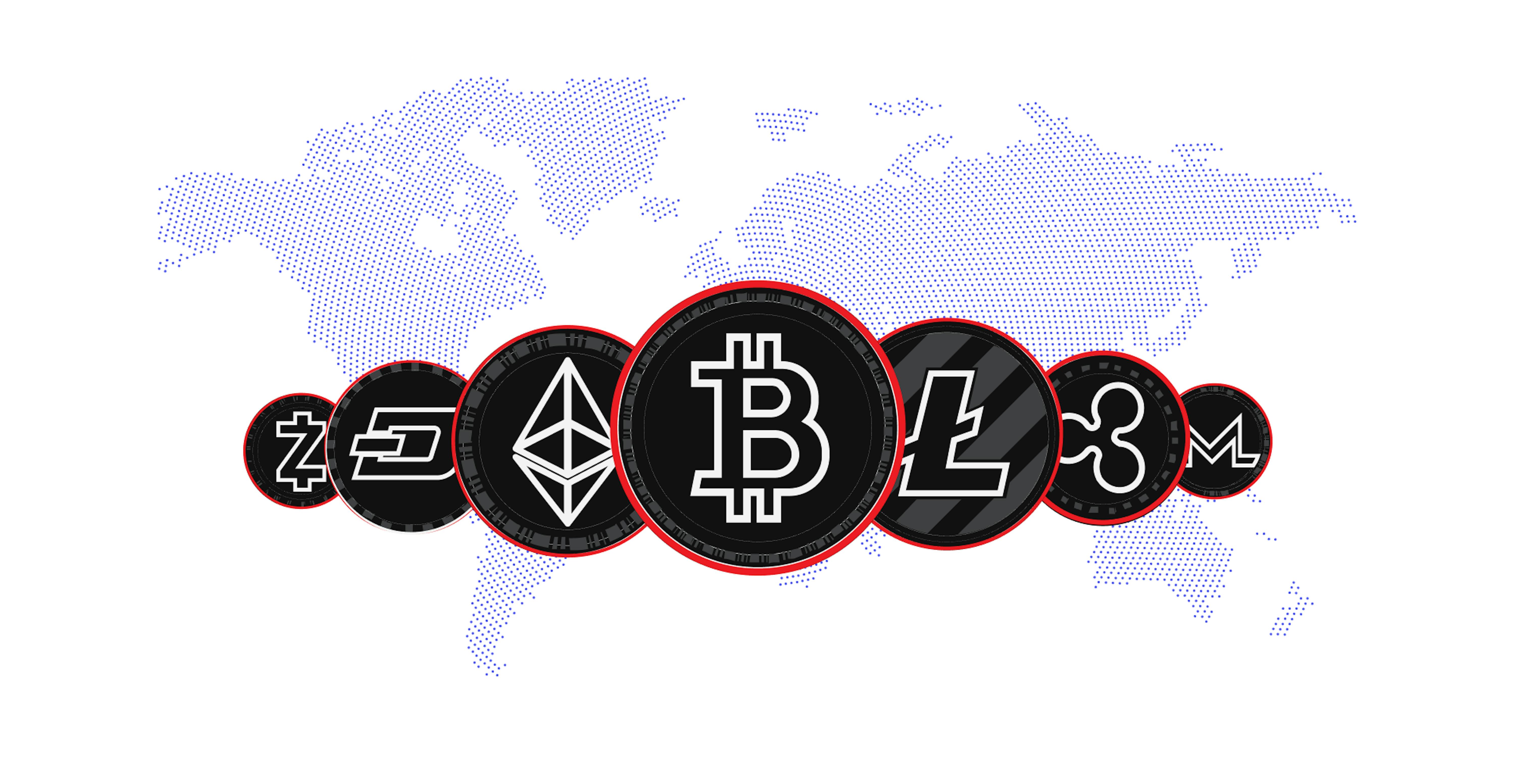
The Internet is becoming what it was originally meant to be, even better. So it is not regret of what we have lost but a better future that we are building here and now. Look at the principles behind it, the technologies that are implementing them, the old companies that are leaning toward it, and the new platforms that are changing the game's rules now. It's all happening right in our eyes, giving us back our rights and freedoms and lots of new opportunities as entrepreneurs, producers, and creators.

